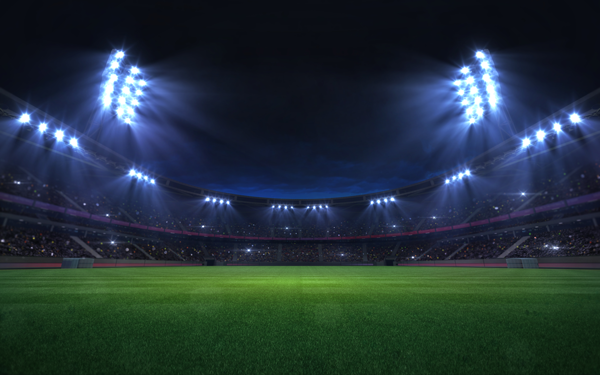While commercial and residential housing have moved to adopt LED lighting solutions in recent years, the sports field lighting market has been slower to move.
A combination of LED supply chain issues and implementation costs, and providers running down their existing assets meant that LED sports adoption has been relatively slow but that situation has changed.
Andrew Nagy, a co-founder at leading supplier Apex Lighting, says that his business has gone “from zero to 100” in the space of about five years.
All new sporting installations, he says, are now with LED lighting rather than older technology metal halide lights.
“There was a phase there when we would have to do two proposals for each project, halide and LED, but that is over now,” says Nagy.
“We’re into the throes of a lot of retrofit projects now, and rather than paying for replacement lights all the time it’s making more and more sense to replace the whole floodlight with an LED.”
As time has passed the tables have turned on the supply issue, and the manufacturing of traditional lamps has wound down, making them scarcer to find.
While LED lighting is still generally more expensive up front there is a maintenance cost advantage which means that many councils and sporting associations are now “biting the bullet” and opting for LED’s rather than investing in old technology.
Another factor is the introduction of a specialised standard for sports industry lighting, AS 2560.2:2021, introduced in 2021. The standard addresses issues such as safety levels, light pollution and the need to cater to HD broadcasts.
At Sylvania-Schreder, another industry provider, national sales manager for the sports industry Steve Cox agrees that councils are now much more focused on LED replacements for their existing installations.
“This is due to the downturn in the production of traditional spare parts, these being lamps and HID components,” he says.
“Cost has certainly been a factor in the slower update however as the technology has improved, the payback periods have reduced.”
Both Cox and Nagy warn that as the market has embraced LEDs there is an emerging issue with poor quality products and installation. This has also been corroborated by other industry sources, independent of the two suppliers.
“Unfortunately, the market is constantly being offered inferior products,” says Cox.
In some cases, he says, clients have been offered cheaper LED options and also attracted by promises which were not delivered on, sometimes by companies which have ceased operating.
Andrew Nagy has also observed some “profiteering” in the area of halide lighting, with suppliers upping prices as inventories waned.
He also says that the performance of LED lights is “not all equal” and he feels that there is still “some innovation yet to occur.”
“You could argue that in the last five years the performance of LEDs has plateaued somewhat,” says Nagy.
“As the market has matured there’s less barriers for competitors to get into the market, which is a danger as you have competitors coming into the market copying products and they are not so good.”
Nagy sees innovation coming in the form of better efficiency for more powerful lights as the market evolves and matures, and next generation LED lighting improves its performance in areas such as controlling intrusive light and beam control.














